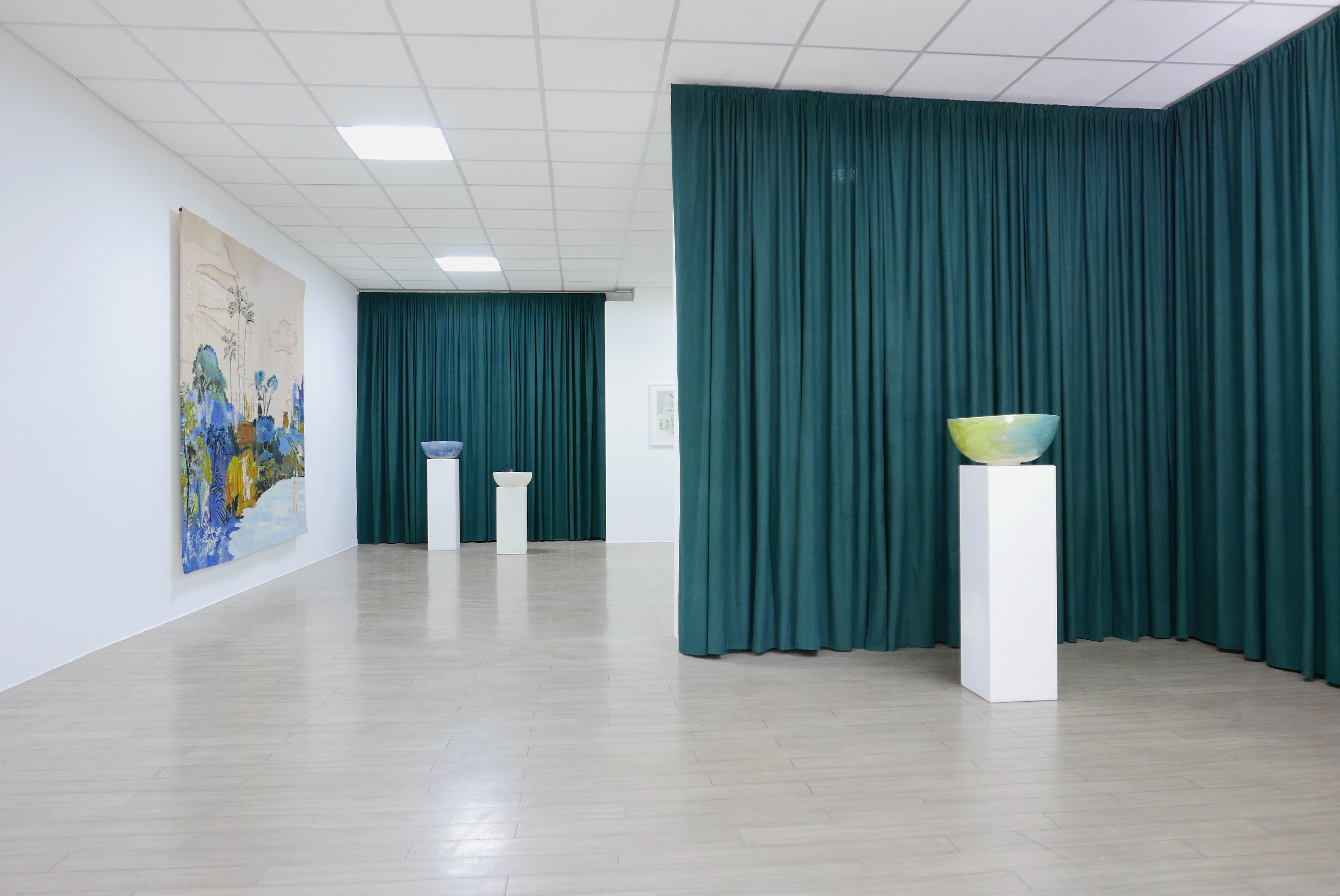Der abscheuliche Kuss
4 Sep-6 Nov 2020
Kunstverein Dresden, Germany
curator
I kissed him under the tail, it was a bit like soil, a bit like road tar when it heats up, he was flickering in pleasure, the field would be just the same when I tongue that, the bird’s feathers parting. — Rebecca Tamas, Witch.
The kiss of great love. A kiss can bring lust, but also suffering. A kiss can be demonic, even lethal. This exhibition draws its title from the twelfth century Latin term Osculum Infame (The Shameful Kiss), which was believed to be heretics’ ritual upon meeting the Devil. The Devil was thought to take the form of an animal – a goat or perhaps a black cat – and the kiss was to be given under its tail. During the years of the witch hunts in Europe, the Osculum Infame became a tangible accusation against heretics and witches. Instrumentalised as pretext for the fierce persecution and the demonisation of an Other, it was used against any individuals who transgressed the artificial boundaries between nature and culture, dominance and submission.
The work of the three artists in the exhibition – Sanam Khatibi, Jessie Makinson and Urara Tsuchiya – precisely explores the wider power dynamics underlying such accusations through an exploration of violence and sensuality across human and animal species. Filled with humour and antagonism, the artists’ paintings, tapestries and ceramics reflect the ambivalence in more-than-human behaviour. As cruelty and care become interchangeable, the scenes present a kind of lust shaped by a constant negotiation between desire and repulsion.
This dichotomy permeates the artists’ practices as they explore varying scales and chronologies. Khatibi, Makinson and Tsuchiya draw together a range of cultural references, resulting in a constellation of symbols and fragments. They fuse influences as varied as Medieval and Renaissance visual culture, Victorian literature, contemporary science fiction and Shunga erotica into juxtapositions that are at once accessible and elusive, recognisable and deviant. At times playful, at times lurid, this gathering of influences gives rise to reconfigurations that ultimately reflect on libidinal appropriation and desires.
The exhibition includes three ceramic bowls by Tsuchiya in which humans and teddy bears kinkily please one another; their arms and legs intertwining in tender embraces. The artist’s intimate compositions are as subversive as they are cheeky, incorporating everyday objects such as the beloved British Henry hoover or a watering can. These impromptu objects and the surrounding power play speak to the artist’s experience of being an Other and living in the United Kingdom. The bowls act as self-contained environments in which all boundaries can collapse; similarly to the erotic Attic kylix (drinking cup) of ancient Greece or Japanse Shunga ceramic bowls, the naughty scenes are concealed in their container and slowly reveal themselves as one approaches.
Each made from different clays – earthenware, stoneware and porcelain – the pieces not only testify to the artist’s mastery of techniques, but also position her work in the historical context of pottery production. Presented in Dresden, Tsuchiya’s first porcelain bowl, resonates with the city’s historical obsession for ‘white gold’, as well as the colonial fetishisation, appropriations and misunderstandings that characterise globalised porcelain production in the eighteenth century. For decades, the Meissen/Dresden factory was the epicentre of the production of pseudo-replicas of Far Eastern porcelain in Europe. A symbol of rarity, prestige and power, German aristocracy amassed huge collections of Oriental and European porcelain ware. Augustus II the Strong notoriously attempted to fill every room in the Japanese Palace of the Zwinger with porcelain, collecting 35,798 pieces in his lifetime. Traces of this legacy still abound in Dresden today and peculiarly can be found in Japan, at the Arita Porcelain Park where a massive reproduction of the Zwinger has been created. In this context, Tsuchiya’s work playfully engages with the ways in which such economies of desire are constantly being renegotiated.
In a new series of works, Jessie Makinson further considers the European interior as a site of constant negotiation. Her painting and drawings showcase a myriad of characters, some peering out of windows or hiding behind their curtain, others parading in the streets in theatrical displays of power. Inspired by sources as varied as Renaissance painter Sassetta, 17th and 18th century Dutch and Flemish interiors, Polish-French modern artist Balthus’ street scenes, and British painters Stanley Spencers and Edward Burra, the works deconstruct exterior and interior spaces into sequences. Each painting or drawing becomes a conglomerate of conversations, plaisanteries and misunderstandings, set in a fantastical intemporal universe. Some protagonists are sporting flamboyant costumes, some wear leaves, lace, fur or tailed catsuits, others are monstrous incarnations hovering between human and animal. Eccentric pets abound in Makinson’s works, like witches’ familiar spirits – servants, predators or protectors – following their masters across the canvas. The scenes bear an apocalyptic intensity, where everyone is out for themselves: drinking, telling stories, selling contraband, plotting or making out.
A similar tension reaches a bursting point in Sanam Khatibi’s paintings and tapestry. Female figures take part in ritualistic, violent, and sexual acts throughout a tropical landscape. Khatibi’s small paintings are visceral, her worlds and characters are as haunted as they are hunted: wildlife copulates and regurgitates, heads are being chopped, blood is dripping. Such dispersed chaos pervades the artist’s flat compositions, as various power structures are acted out. A confluence of influences, myths and allegories, the works are attuned with her desire to collect fragments of iconography and rearrange them into the enigmatic assemblages that characterise her artistic practice. In one tableau, one might recognise elements of Bosch’s paintings of sin and moral failings, Botticelli’s nymphs, Henry Darger’s watercolours, Bayeux’s tapestries, Cranach’s virgins or Pre-Columbian and Etruscan art. As such, Khatibi speaks to the history of Western art as a constant flow of negotiations and reinventions. The artist reappropriates and transforms that language into subversive juxtapositions; elusive stories that can only end with a kiss.








